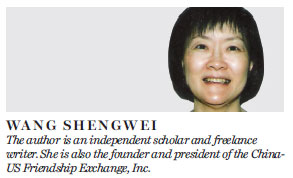Chinese Nobel laureate is an inspiration to the city's youth
Updated: 2015-10-09 08:33
By Wang Shengwei(HK Edition)
|
|||||||||
On Oct 5, the Nobel Prize committee announced the 2015 winners of the Nobel Prize in Physiology or Medicine: William Campbell and Satoshi Omura for their work on a therapy against roundworm, shared with Tu Youyou, the first ever Nobel laureate working in traditional Chinese Medicine (TCM), for a therapy against malaria. "The two discoveries have provided humankind with powerful new means to combat these debilitating diseases that affect hundreds of millions of people annually," the Nobel committee said. "The consequences in terms of improved human health and reduced suffering are immeasurable."
Tu, the first native Chinese woman ever to win the Nobel Prize in sciences and the Lasker Award, was educated in China and carried out work within China. Currently she is the chief scientist in the China Academy of Chinese Medical Research.
Tu was sent to Hainan province to see the impact of malaria for herself at a time when China's ally, North Vietnam, was at war with South Vietnam and the United States. Malaria was a major cause of death and was evolving resistance to chloroquine. Malaria was also a major cause of death in China's southern provinces. Chinese leader Mao Zedong set up a secret drug discovery project, named Project 523 after its starting date, on May 23, 1967. Tu had to leave her daughter behind at a local nursery.
Tu is regarded as the "Professor of Three Nos" - no postgraduate degree (there was then no postgraduate education in China), no study or research experience abroad, and not a member of any Chinese national academies (Chinese Academy of Sciences and Chinese Academy of Engineering). Up until 1979 China was largely isolated from the rest of the world. But nothing seems to have stopped Tu from pursuing research to rescue human lives. Before 2011, Tu had been obscure for decades, and is described as "almost completely forgotten by people". She is now regarded as a representative figure of the first generation of Chinese medical workers since the establishment of the People's Republic of China in 1949.
She collected 2,000 candidate recipes, ancient texts and folk remedies for possible leads for her research. By 1971, her team had made 380 extracts from 200 herbs, and discovered that the extracts from qinghao (Artemisia annua, sweet wormwood) looked particularly promising in dramatically inhibiting plasmodium growth in animals. Tu found the way to extract it and her innovations boosted potency and slashed toxicity of this extract. In 1972, she and her colleagues obtained the pure substance and named it qinghaosu, now commonly called artemisinin in the West, which has saved millions of lives - especially in the developing world. Tu's group first determined artemisinin's chemical structure. In 1973, while trying to confirm the carbonyl group in the artemisinin molecule, Tu accidentally synthesized dihydroartemisinin, a drug used to treat malaria.
At the age of 85, this prestigious prize bestows upon her the greatest honor of her career. For mainlanders and Hong Kong people it offers immense encouragement to emulate her pioneering spirit in scientific research, not only in the realms of modern science and technology but also in traditional Chinese inventions including TCM. Unlike pharmaceutical companies which directly aim at making profits, Tu's scientific dedication shows that being able to cure diseases and save human lives is a truly valuable way to reduce economic costs and bring about a healthy society.
In the meantime, the proposed Hong Kong Innovation and Technology Bureau has been thwarted a few times by "pan-democrats" in the Legislative Council. This positive initiative will put to the vote again this month.
Hong Kong is certainly not short of talented people. Recall that recently five secondary school students represented Hong Kong to compete at the 46th International Physics Olympiad (IPhO), held in July in Mumbai, India. The team earned three gold and two silver, matching the previous 2011 record among Hong Kong teams. The rankings for IPhO 2015 are remarkable: Hong Kong placed sixth out of 72 countries or regions that earned medals.
It is also highly encouraging that the Hong Kong Science Museum, in its Science News Corner, regularly showcases impressive scientific discoveries made at Hong Kong universities. This further inspires our students to excel on the world stage.
Will Tu's devotion to science, her country and the world inspire the "pan-democrats" to stop filibustering? Will Hong Kong's talents have a better future? It is time for us to rekindle our love for the city.

(HK Edition 10/09/2015 page10)